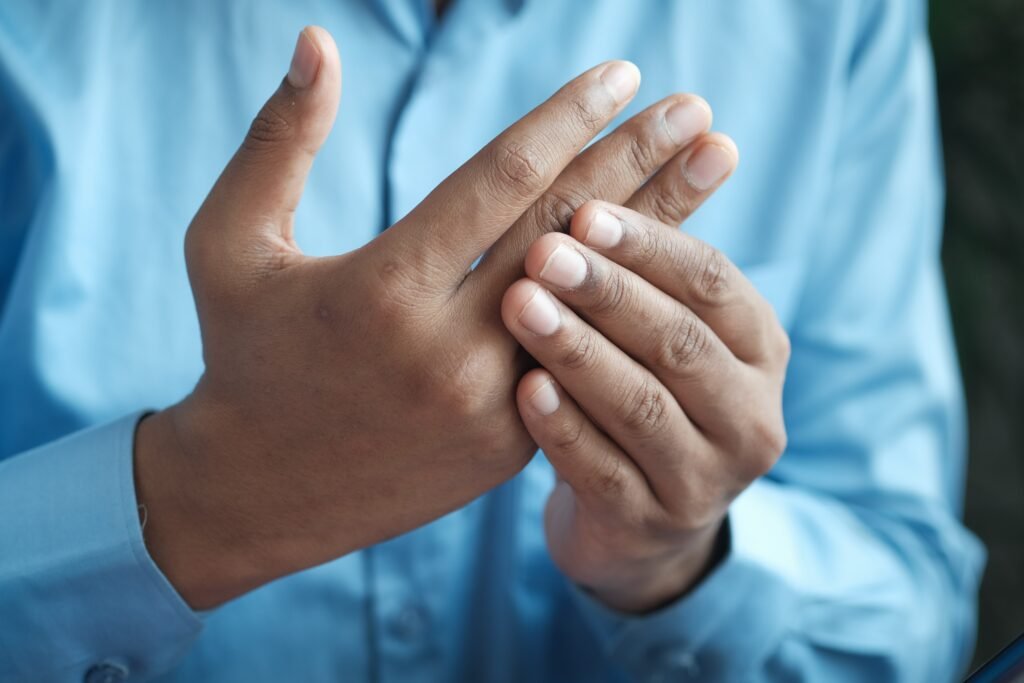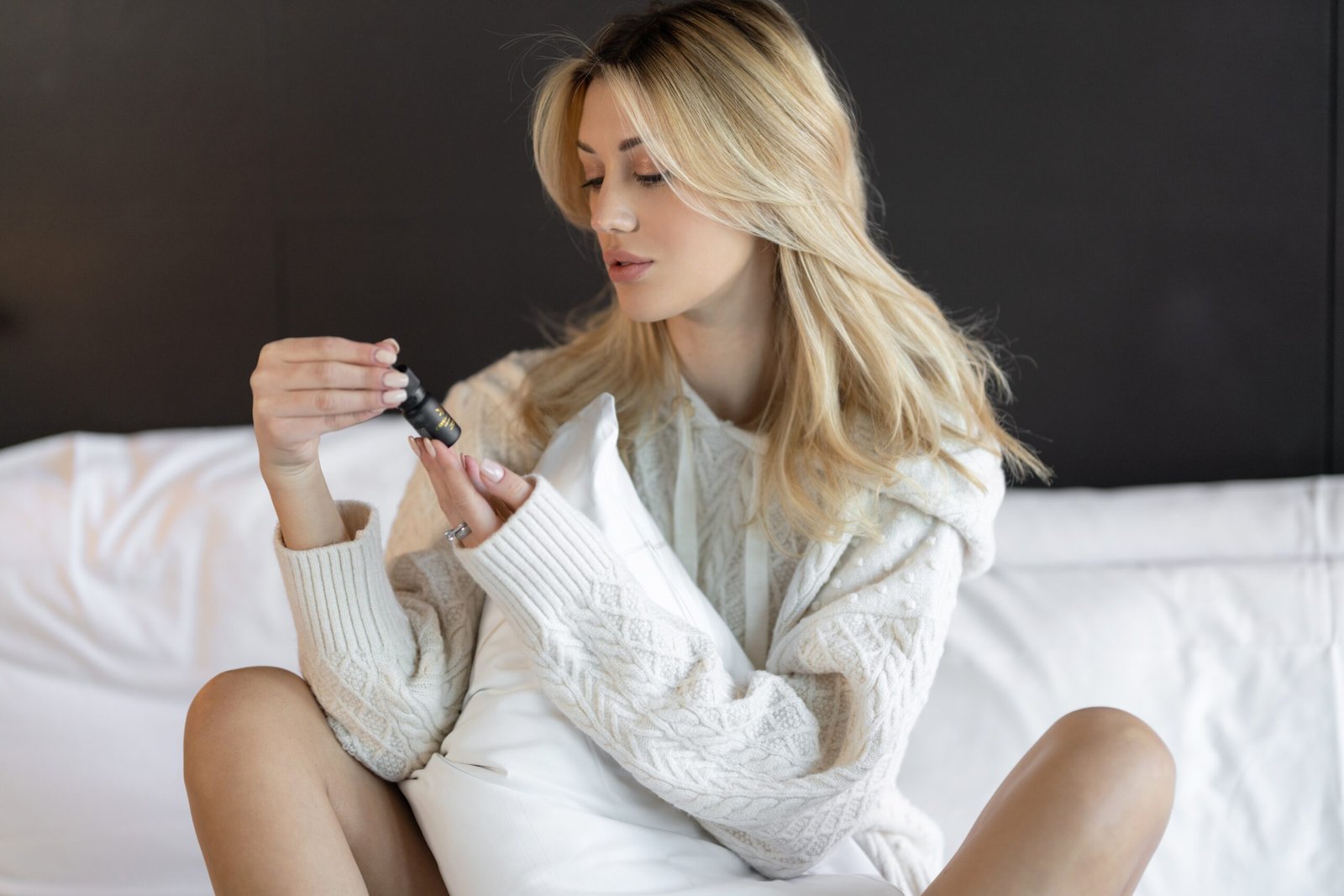Figuring out the CBD dosage and potency that’s right for you is a little like a Jackson Pollock painting. Sometimes you just need to throw something down, step back, and see how you feel.
There simply haven’t been enough large-scale human trials with CBD for scientists to know how much is needed for every unique situation. There are too many variables, like your age, weight, health, symptoms, etc.
That said – medical professionals around the globe have been treating patients with CBD for years. We know from trial and error that:
- Dosage varies by patient
- Start low, increase as needed
- Source CBD from reputable brands
In this article, we’ll dive deeper into these topics to give you a better understanding of how much CBD you should consider for your symptoms.
But first…
How does CBD work?
Taking CBD is all about re-balancing important bodily functions like mood, energy, and movement. If one of these functions is depleted, taking CBD could help reset it. Too much CBD, however, can throw that process out of balance again.
CBD (cannabidiol) is the dominant cannabinoid found in the hemp plant. Hemp is a member of the Cannabis sativa family and loosely related to marijuana, but it has none of marijuana’s “high” inducing properties. (Hemp can contain THC, but it can’t legally exceed 0.3% of THC, so you can’t get “high” from hemp.)
The human Endocannabinoid System (ECS) is innately equipped to work with hemp’s CBD compound. It binds to our ECS receptors in the same way as our own naturally-occurring cannabinoids, and helps us achieve internal homeostasis.
Hemp CBD works so seamlessly with the human body that it’s almost as if hemp evolved on Earth solely to support humankind. Or vice versa, that our ECS evolved to better accept plant-based CBD as a substitute. (It is possible! Our history has been intertwined with hemp for thousands and thousands of years.)
CBD eases a wide range of symptoms, and is commonly used to treat chronic pain, joint issues and inflammation, anxiety, and depression. It has also been manufactured for pharmaceutical use to treat severe epilepsy disorders.
Despite its widespread use in the medical community, there is no “one size fits all.”
Just like every human being is unique, their CBD needs are also unique.
Before you start on any CBD regimen, we suggest that you evaluate the following 3 variables for assessing your CBD needs.
Important! We are not physicians and the following is not medical advice. Please speak to a medical professional before beginning a CBD regimen, especially if you have an existing health condition or if you are taking any prescription drugs.
Consider your symptoms

Many CBD merchants offer 3 potencies for CBD products: low, moderate, and strong.
For instance, low strengths commonly contain between 500 – 750mg of CBD. Moderate is around 1000mg or 1250mg. Strong is considered between 1000mg and 1500mg. And strengths above 1500mg are considered very strong.
So how do you know what dosage is right for you? Try matching the CBD strength to the severity and frequency of your symptoms.
If you experience mild and occasional anxiety, joint pain, stress, or insomnia, you might find that a lower dosage (~300 – 750mg) works for you.
Moderate and frequent bouts of pain, depression or other symptoms may require a medium dosage (1000 – 1250mg).
And people who experience chronic pain or severe anxiety and depression may require a higher dosage at 1500mg or above.
The generally accepted rule is to start with low strength and try it out for a week. If symptoms haven’t improved, increase the dosage or CBD strength for the following week.
We typically recommend following this rule, except in cases with severe symptoms or when the goal is to withdraw slowly from a narcotic painkiller. For these cases, you may be better off starting at a higher strength and working your way down to a comfortable level over time.
Consider your unique health profile
Anything you ingest or put on your body is processed to some degree by your liver. This includes CBD.
Your liver’s processing capacity is dependent on your age, your weight, height, existing health conditions, and other factors. Taller and heavier people may need more CBD than petite people to relieve the same symptoms.
How well your Endocannabinoid System already performs will also determine how much more or less CBD you need. A prior health condition like arthritis or insomnia indicates an existing deficiency in your Endocannabinoid System.
The current performance of your ECS, plus your unique characteristics, contribute to your body’s ability to use CBD effectively. So if you experience chronic pain but are very petite, this might be a reason to start at a low dose of CBD. A low dose for one person may be just as effective as a very strong dose for another person.
Account for the delivery system
The way you consume CBD will affect what’s called its bioavailability. CBD’s bioavailability refers to the proportion of CBD that actually gets absorbed into the body so it can be effective.
Though there haven’t been enough studies on the topic, some research suggests that CBD oils hover around 20% bioavailability, and is more readily absorbed (up to 40%) when taken sublingually alongside a high-fat meal.
CBD capsules and edibles are less bioavailable because they need to travel through the digestive system first.
Vaping provides the most rapid delivery of CBD with an impressive 30% or higher absorption rate. But that doesn’t mean you should buy a vape kit if you don’t like the act of smoking.
Choose whatever method you prefer and account for its bioavailability when you select your CBD potency and dosage.
How much CBD per dose?

Now that you’ve assessed your symptoms, your body, and your preferred method of consumption, let’s explore the question of quantity, and frequency.
Let’s assume you’ve picked up a 30mL bottle of 1000mg CBD oil to treat moderate arthritis. The bottle contains a 1mL dropper (pipette). How much should you take?
Here’s where you’ll have to experiment a bit.
Some doctors start their patients off at just a couple drops from the pipette per day. Others suggest ¼ – ½ of a pipette in the morning, and then again in the evening before bed.
Neither proposal is right nor wrong, because CBD’s effectiveness depends on the variables mentioned above.
If you’re not sure how much to start with, and you don’t suffer from an extremely uncomfortable ailment, take the time to try out lower dosages first. Why pay more if your arthritis is relieved with a minimal amount?
Remember – CBD is all about restoring balance to your Endocannabinoid System. If a small amount does the trick, a greater quantity could throw your ECS out of balance even moreso.
How often should I take CBD?
CBD needs time to build up in your system. When your ECS needs to draw on your cannabinoids to serve a function (e.g. Reduce the inflammation in your joints), it will have a greater chance of success if there’s an entire pool of CBD compounds ready and waiting to be useful.
Building up your cannabinoid supply could take 4 – 6 weeks of experimenting with different doses and/or CBD strengths.
For example, you might start off with ¼ dropper of 500mg CBD oil, once a day. If you don’t feel any improvement after 4 days, add a second dose of the same amount before bed.
If you still don’t feel an improvement after another 7 days, increase to ½ dropper.
Wait another 4 – 7 days before increasing to ¾ dropper, and another 4-7 days before increasing to a full, 1mL dropper of CBD oil twice per day.
After, if you still don’t feel any improvement, consider increasing to the next highest potency and repeat your experimenting.
Of course, experimenting like this is less possible with a fixed unit of CBD like a capsule or edible.
Similarly, there’s not much experimenting you can do with a topical CBD product like a salve or lotion. (Aside from increasing to a higher strength.) You simply apply the salve liberally to the affected area as often as needed.
Keep in mind that some ailments could be better treated with more frequent, lower dosing (called microdosing). Someone with chronic pain might find better pain relief by taking smaller doses every 2 – 3 hours or whenever their pain levels intensify.
Others might keep a morning and evening dosage routine, and add microdosing on days when they’re experiencing a flare-up of symptoms (like migraines, severe depression, etc.).
Once again, how frequently you should take CBD depends on your unique situation.
Recap
The best amount of CBD to take is unique to your body and your existing health conditions. Thankfully, you can’t get addicted to CBD. And unlike narcotic painkillers, you can’t hurt yourself badly by experimenting with different amounts.
Figuring out the optimal amount and potency can be frustrating. It’s important to have a solid dosage plan and stick to it for 4 – 6 weeks before deciding to try a different potency or brand. Write down your plan in a journal and keep a daily log of your intake and symptoms.
CBD takes time to build up in the body. Start off by taking a small amount every day and you’ll start to feel a difference in your symptoms over time. If you don’t feel a difference after a week, change or increase your dose.
Don’t become impatient and triple your dosage overnight if you don’t feel anything. Instead, increase gradually over time. Similarly, don’t write off CBD entirely if it’s still not working for you after the first few weeks.
Finally, if you feel like you’ve tried every variation of dosage and potency, and still don’t feel any benefits, talk to a doctor who is willing to speak to you about CBD. They’ll be able to recommend a regimen for your unique health profile.











